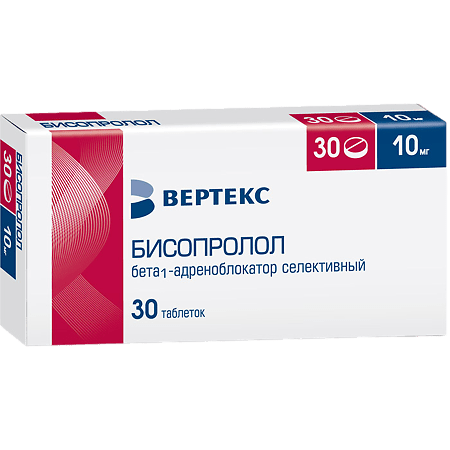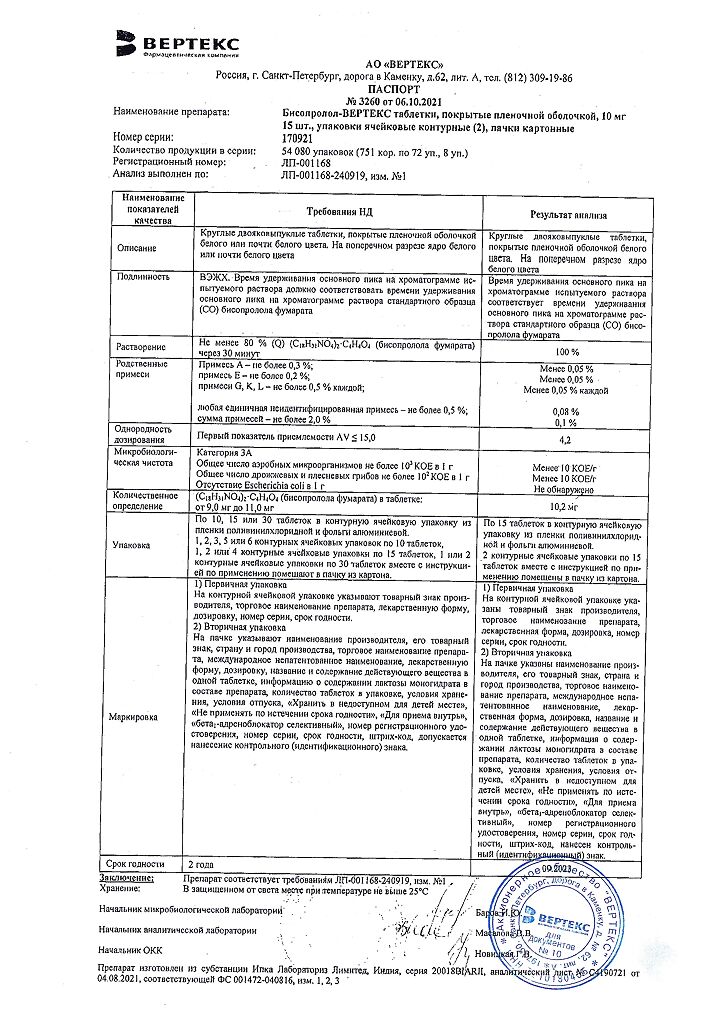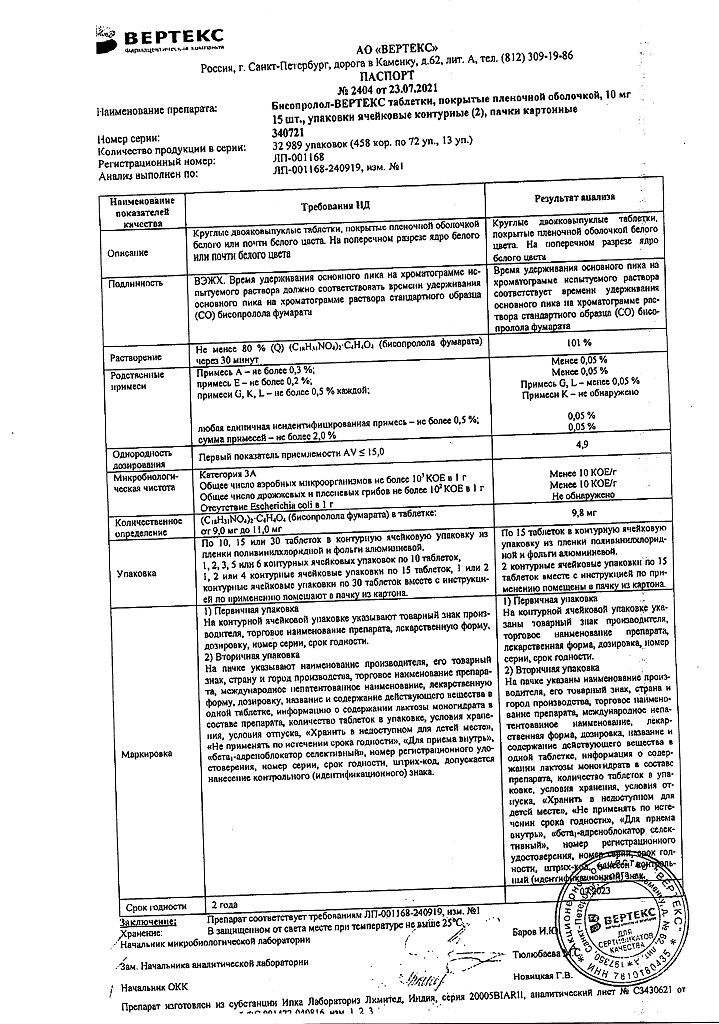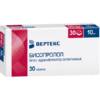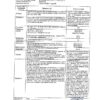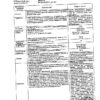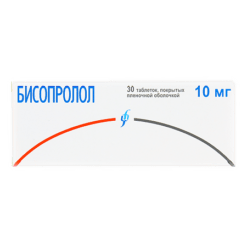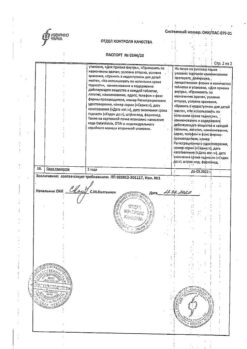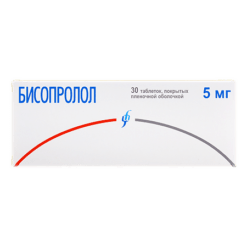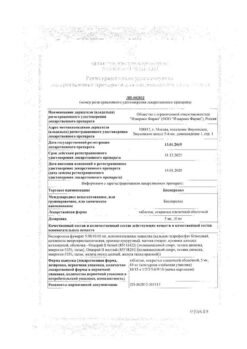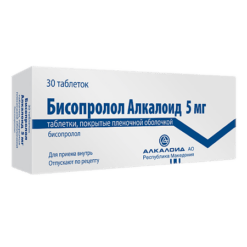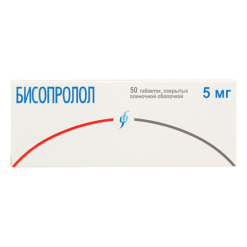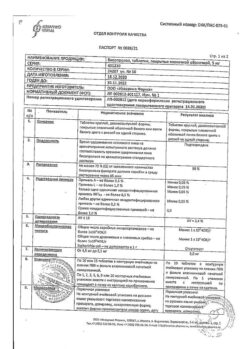No products in the cart.
Bisoprolol-Vertex, 10 mg 30 pcs.
€4.74 €3.95
Out of stock
(E-mail when Stock is available)
Description
Bisoprolol is a selective beta1-adrenoblocker without intrinsic sympathomimetic activity and has no membrane-stabilizing activity.
Bisoprolol decreases plasma renin activity, decreases myocardial oxygen demand, decreases HR (at rest and during exercise) and cardiac output without significantly decreasing stroke volume. It suppresses AV conduction.
It has antianginal and hypotensive effect. In high doses (200 mg and more) it can also cause blockade of β2-adrenoreceptors mainly in bronchi and in vascular smooth muscle.
Indications
Indications
Arterial hypertension, prevention of angina attacks.
Pharmacological effect
Pharmacological effect
Bisoprolol is a selective beta1-blocker without internal sympathomimetic activity and does not have membrane stabilizing activity.
Bisoprolol reduces plasma renin activity, reduces myocardial oxygen demand, reduces heart rate (at rest and during exercise) and cardiac output, while stroke volume does not decrease significantly. Inhibits AV conduction.
Has antianginal and hypotensive effects. In high doses (200 mg or more) it can cause blockade of β2-adrenergic receptors, mainly in the bronchi and vascular smooth muscles.
Special instructions
Special instructions
Use with caution for psoriasis and when there is a family history of psoriasis, diabetes mellitus in the decompensation phase, or with a predisposition to allergic reactions.
For pheochromocytoma, the use of bisoprolol is possible only after taking alpha-blockers. Avoid sudden withdrawal of bisoprolol; the course of treatment should be completed slowly with a gradual reduction in dose.
Active ingredient
Active ingredient
Bisoprolol
Composition
Composition
1 tablet contains bisoprolol (in the form of fumarate) 10 mg.
Contraindications
Contraindications
Chronic heart failure stage II B – III, cardiogenic shock, AV block II and III degrees, CVS, sinoatrial block, bradycardia, arterial hypotension (systolic pressure less than 90 mm Hg); tendency to bronchospasm (bronchial asthma and other diseases with broncho-obstructive syndrome), severe peripheral circulatory disorders; simultaneous use of MAO inhibitors (except for MAO type B inhibitors), increased sensitivity to bisoprolol and other beta-blockers; pregnancy and lactation.
Side Effects
Side Effects
From the central nervous system and peripheral nervous system: weakness, fatigue, dizziness, headache, sleep disorders, mental disorders (depression, rarely hallucinations), feeling of cold and paresthesia in the extremities.
From the cardiovascular system: orthostatic hypotension, bradycardia, impaired AV conduction, the appearance of symptoms of heart failure, worsening intermittent claudication and the main clinical symptoms of Raynaud’s syndrome.
From the organ of vision: decreased secretion of tear fluid, conjunctivitis.
From the digestive system: diarrhea, constipation, nausea, abdominal pain.
From the musculoskeletal system: muscle weakness, muscle cramps.
Interaction
Interaction
Allergens used for immunotherapy or allergen extracts for skin testing increase the risk of severe systemic allergic reactions or anaphylaxis in patients receiving bisoprolol.
Iodine-containing radiopaque drugs for intravenous administration increase the risk of developing anaphylactic reactions.
Phenytoin, when administered intravenously, and drugs for inhalation general anesthesia (hydrocarbon derivatives) increase the severity of the cardiodepressive effect and the likelihood of a decrease in blood pressure.
Changes the effectiveness of insulin and oral hypoglycemic drugs, masks the symptoms of developing hypoglycemia (tachycardia, increased blood pressure).
Reduces the clearance of lidocaine and xanthines (except diphylline) and increases their concentration in plasma, especially in patients with initially increased clearance of theophylline under the influence of smoking.
The hypotensive effect is weakened by NSAIDs (Na+ retention and blockade of prostaglandin synthesis by the kidneys), corticosteroids and estrogens (Na+ ion retention).
Cardiac glycosides, methyldopa, reserpine and guanfacine, slow calcium channel blockers (verapamil, diltiazem), amiodorone and other antiarrhythmic drugs increase the risk of developing or worsening bradycardia, AV block, cardiac arrest and heart failure.
Nifedipine can lead to a significant decrease in blood pressure.
Diuretics, clonidine, sympatholytics, hydralazine and other antihypertensive drugs can lead to an excessive decrease in blood pressure.
Prolongs the effect of non-depolarizing muscle relaxants and the anticoagulant effect of coumarins.
Tri- and tetracyclic antidepressants, antipsychotic drugs (neuroleptics), ethanol, sedatives and hypnotics increase CNS depression.
Concomitant use with MAO inhibitors is not recommended due to a significant increase in the hypotensive effect; the break in treatment between taking MAO inhibitors and bisoprolol should be at least 14 days.
Non-hydrogenated ergot alkaloids increase the risk of developing peripheral circulatory disorders.
Ergotamine increases the risk of developing peripheral circulatory disorders; sulfasalazine increases the concentration of bisoprolol in plasma; Rifampin shortens the half-life.
Overdose
Overdose
Symptoms:
arrhythmia, ventricular extrasystole, severe bradycardia, AV block, marked decrease in blood pressure, chronic heart failure, cyanosis of fingernails or palms, difficulty breathing, bronchospasm, dizziness, fainting, convulsions.
Treatment:
gastric lavage and administration of adsorbents; symptomatic therapy: in case of developed AV block – intravenous administration of 1-2 mg of atropine, epinephrine or installation of a temporary pacemaker; for ventricular extrasystole – lidocaine (class IA drugs are not used); when blood pressure decreases, the patient should be in the Trendelenburg position; if there are no signs of pulmonary edema – intravenous plasma-substituting solutions, if ineffective – administration of epinephrine, dopamine, dobutamine (to maintain chronotropic and inotropic effects and eliminate a pronounced decrease in blood pressure); for heart failure – cardiac glycosides, diuretics, glucagon; for convulsions – intravenous diazepam; for bronchospasm, beta-agonists by inhalation.
Storage conditions
Storage conditions
Store in a dry place, protected from light, out of reach of children, at a temperature not exceeding 20 °C.
Shelf life
Shelf life
3 years.
Manufacturer
Manufacturer
Vertex, Russia
Additional information
| Shelf life | 3 years. |
|---|---|
| Conditions of storage | Store in a dry place protected from light, out of reach of children, at a temperature not exceeding 20 ° C. |
| Manufacturer | Vertex, Russia |
| Medication form | pills |
| Brand | Vertex |
Other forms…
Related products
Buy Bisoprolol-Vertex, 10 mg 30 pcs. with delivery to USA, UK, Europe and over 120 other countries.

